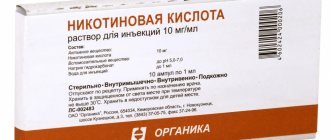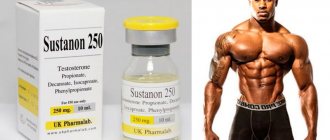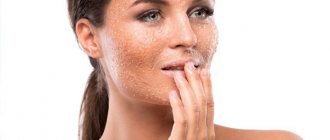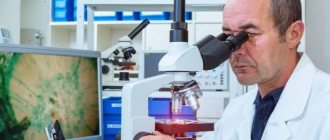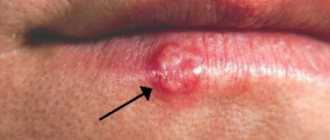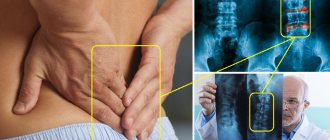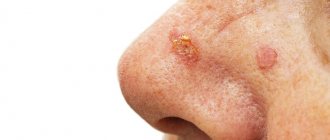Hyaluronic acid (HA), or hyaluronate, is one of the most important components of the intercellular fluid. It is “responsible” for retaining moisture in tissues, participates in the process of cell division, and ensures the circulation of lymphocytes, blood cells and oxygen in the body.
With age, the synthesis of hyaluronate decreases, which leads to tissue aging, including the skin. Injections of hyaluronic acid into problem areas help compensate for its deficiency and restore the skin to its former youth and elasticity. This method not only provides a significant anti-aging effect, but also allows you to correct facial features, which in general makes contouring a good alternative to plastic surgery.
Thanks to hyaluronic acid injections you can:
- eliminate wrinkles, including vertical folds between the eyebrows, wrinkles on the forehead, lips, eyes, neck and décolleté;
- smooth out nasolabial folds, nasolacrimal and lacrimal grooves;
- carry out lip contouring, that is, correct their shape;
- carry out correction of the earlobe and nose.
Changing lip volume
With the help of injections of drugs containing hyaluronic acid, you can achieve significant changes in appearance. The most popular procedure in aesthetic medicine is changing the volume and shape of the lips.
This service is used not only by young women who want to make their lips more sexy, but by people of all ages who are faced with the following problems:
- purse string wrinkles;
- drooping corners of the mouth;
- disproportion;
- curvature of the lip line.
Using hyaluronic acid, you can change the shape of your cheeks, cheekbones or chin, which makes your facial features more harmonious.
Hyaluronic acid is superior to other drugs for increasing lip volume and has the following advantages:
- naturalness _ After the procedure, the lips become voluminous, but without excessive plumpness, and their contour is clearer;
- facial expressions are not disturbed;
- there are no complications , because hyaluronic acid is as friendly as possible to the body;
- rejuvenation of the skin of the lips occurs due to the stimulating effect on metabolic processes.
Main types of fillers
The advantages of hyaluronic fillers for the face and body are that hyaluronic acid is a substance contained in skin cells and is responsible for retaining moisture in the intercellular space. With age, its synthesis slows down, and a deficiency of this substance develops. The skin becomes less elastic, dry, wrinkles and other imperfections appear. Fillers replenish the deficiency of hyaluronic acid, restoring skin elasticity, beautiful color and pleasant texture. Moisturizing occurs, the production of elastin and collagen is stimulated, and regeneration processes begin. Moreover, the drugs have a gel structure, due to which they fill the intercellular space well and are slowly absorbed (biodegradation takes from 6 to 24 months).
Types of hyaluronic fillers
The results of recent studies indicate that the optimal concentration of hyaluronic acid in filler is 22 mg/g. Preparations based on it also contain a stabilizer. Its concentration is considered optimal at the rate of 0.5 mg/g. Most often, the stabilizer is BBDE, that is, butanediol diglycidyl ether, less often - DVS (divinyl sulfone). It is the concentration of the stabilizer that provides the desired cosmetic effect, but the higher it is, the higher the risk of an undesirable consequence in the form of an allergic reaction, since these substances are no longer “native” to the skin.
Fillers are divided into:
- Monophasic (hyaluronic acid content – 15-26 mg/g). Examples: Teosyal, Juviderm, Stylage. Evenly distributed in the folds of the skin and under it. They are distinguished by elasticity, are easier to insert under the skin and are corrected after insertion by manual action. Secondary correction after use is almost never necessary. Biodegradation occurs evenly. They are used to correct and enlarge lips, fill wrinkles, including facial wrinkles, post-acne, scars, and improve skin tone.
- Biphasic (GK – 22-23 mg/g). Examples: Restylane, Perfectha Derm. They allow you to work with larger-scale imperfections than single-phase ones. They have a high density, so manual correction is difficult, they have a smooth consistency, and are more difficult to insert and distribute under the skin. Biodegradation occurs unevenly. Primary – up to 30%, so contour plastic surgery requires correction after some time. The main advantage is long-term preservation of the effect due to high density. Even if deep lifting was performed, the primary result will last up to 1 year. Used to correct and lift the oval of the face, fill deep wrinkles, correct the tip and back of the nose, chin, cheekbones, and lip modeling.
Elimination of wrinkles with hyaluronic acid
Injection cosmetology has long rivaled cosmetic surgery in effectiveness, largely due to the use of hyaluronic acid. Fillers containing it are among the most popular. Their advantages:
- Safety . Hyaluronic acid, being part of cellular metabolism, is perfectly accepted by the body without causing side effects.
- Instant effect . Immediately after the filler is injected, the wrinkle is pushed out and the skin surface is smoothed.
- Rejuvenation . Hyaluronic acid, located under the surface of the skin, additionally stimulates regeneration, the production of collagen and elastin, which leads to the formation of new cells and increased skin elasticity.
Hyaluronic acid fillers are used to correct the following problems:
- pronounced nasolabial folds;
- marionette lines running from the corners of the lips to the chin;
- eyebrow wrinkles;
- horizontal wrinkles on the forehead;
- wrinkles on the bridge of the nose;
- mesh wrinkles around the eyes;
- scars and scars after injuries or acne.
Content
- Areas corrected with fillers
- Main varieties
- Indications and contraindications
- Carrying out the procedure
- Rehabilitation
- Possible side effects
- Before/after photos
Fillers are used for the following procedures:
- bioreinforcement of the body and face;
- elimination of wrinkles;
- correction of the chin, cheekbones, nose;
- correction of certain types of scars;
- face oval lifting;
- eliminating dry, unhealthy skin color;
- correction of earlobes;
- elimination of post-acne;
- as part of a weight loss program;
- elimination of asymmetry.
Treatment and rejuvenation with hyaluronic acid
The use of hyaluronic acid is effective for treating skin diseases and preventing aging. Mesotherapy and biorevitalization are injection techniques for rejuvenating and healing the skin using hyaluronic acid and various vitamin complexes containing it.
The essence of the method is simple: a specialist uses a syringe to inject microdoses of hyaluronic acid in various concentrations, or preparations containing it, under the patient’s skin.
Such procedures stimulate metabolism, rejuvenate the skin and treat many diseases. They are indicated in the following cases:
- wrinkles _ Regardless of the depth of wrinkles, it is possible to achieve a significant effect of reducing or completely eliminating them for a long period. The technique works great in combination with the use of fillers;
- dehydrated skin . Often this phenomenon is not associated with a lack of moisture in the body, but with a decrease in the natural production of hyaluronic acid. Its artificial introduction additionally saturates the skin with moisture.
- aging skin - helps to launch metabolic processes, restore the production of its own hyaluronic acid, even out skin texture and improve complexion;
- ptosis - sagging tissue is associated with decreased production of collagen and elastin. The introduction of hyaluronic acid helps restore skin turgor;
- enlarged pores . This phenomenon is often associated with skin dehydration. One of the wonderful properties of hyaluronic acid is its ability to bind water. Its additional introduction helps to increase skin hydration several times;
- acne and acne . Among the causes that cause them are metabolic disorders, increased production of sebum, and loss of the skin’s ability to cleanse itself. Hyaluronic acid normalizes metabolism, including the functioning of the sebaceous glands. Restores the natural ability to exfoliate dead skin particles;
- scars . A course of mesotherapy can significantly reduce the severity of scars, regardless of their origin, be it post-acne, a scar from an injury, or the consequences of a surgical operation. Hyaluronic acid stimulates the growth of new tissue, making scars less noticeable or eliminating them altogether;
- pigmentation disorder . The appearance of age spots is often associated with congestion, age-related changes and skin aging. Cocktails with hyaluronic acid restore natural processes, saturate the skin with vitamins and microelements and stimulate its renewal, which can significantly reduce or eliminate hyperpigmentation;
- rosacea . Spider veins are a sure sign of damage to thin vessels. The introduction of hyaluronic acid, which promotes tissue regeneration and elimination of the defect, will help restore the natural appearance of the skin;
- stretch marks are a blemish that occurs as a result of damage to the skin in places of strong tension. Hyaluronic acid helps eliminate breaks, even out skin texture and tone;
- hair loss . Hair loss associated with metabolic disorders and vitamin deficiency can be eliminated thanks to the stimulating effects of hyaluronic acid. It helps restore metabolic processes and improves the absorption of vitamins and microelements included in the cocktail. As a result, hair loss stops, and the condition of the hair improves, it becomes thick and shiny;
- cellulite . Lumpy skin is often a sign of severe dehydration. Injections of hyaluronic acid restore water metabolism, tone and help smooth out the skin texture;
- preparation for plastic surgery, chemical peels, laser dembrasion and the postoperative period . A course of hyaluronic acid injections will help increase the chances of a favorable outcome of the operation, reduce the risk of complications, speed up healing and shorten the rehabilitation period.
Areas corrected with fillers
One of the most popular uses of hyaluronic fillers is lip augmentation and/or correction of their shape and contour, elimination of drooping corners and wrinkles.
Video about lip augmentation
In addition, hyaluronic acid injections (“beauty injections”) are performed on the following areas of the face and body:
- eyebrows (removal of interbrow folds, or so-called “wrinkles of anger”);
- eyes (to eliminate crow's feet, adding volume to eyelids);
- forehead (removal of facial wrinkles);
- face (oval correction);
- cheekbones (adding volume);
- back of the hands (rejuvenation);
- any area of skin (filling scars);
- ears (lobe correction);
- cheeks (replenishing volume, giving relief).
Rehabilitation period
To avoid complications and enhance the effect after any injection procedures with hyaluronic acid, you should adhere to the following rules:
- During the day, try not to touch the injection areas and avoid exposure to them during sleep;
- use antiseptic drugs recommended by a specialist;
- do not use cosmetics unless otherwise prescribed by a doctor;
- avoid exposure to ultraviolet radiation, after the ban on the use of cosmetics is lifted, apply sunscreen to the skin;
- do not overheat, do not visit the sauna and bathhouse;
- refuse any care and therapeutic procedures, unless otherwise recommended by the cosmetologist;
- If you suspect complications, contact a specialist.
Mesotherapy procedure
The mesotherapy procedure is very popular among women. A drug containing hyaluron, vitamin, peptides and other drugs is injected into problem areas of the skin. As a result, the required volume and rejuvenation effect is achieved. The main function of mesotherapy is moisture retention and rejuvenation effect.
After the procedure, the skin becomes smooth and moisturized. The duration of the result obtained depends on the injection zone. For example, if this is a moving part of the face (lips, eyebrow area), then the effect of the drug will be less than if the composition is injected into the area under the eyes or nasolabial folds. When the effect is lost, you can undergo a new procedure. How much the procedure will cost depends on the initial state of the skin, what composition is used and in what quantity. Mesotherapy is carried out using a local anesthetic cream that relieves pain during the injection process. In our clinic, doctors use high-quality anesthesia (painkillers), which allows you to almost completely get rid of unpleasant sensations.
Contraindications to the use of hyaluronic acid
The use of hyaluronic acid may be contraindicated in the following cases:
- individual intolerance;
- allergy;
- acne in the acute phase;
- rehabilitation period after deep peeling or polishing;
- blood diseases, bleeding disorders, or taking medications that affect blood clotting;
- pregnancy and lactation;
- tendency to form scars;
- skin diseases;
- skin damage in the affected area;
- diabetes;
- herpes virus;
- oncological diseases;
- HIV or AIDS;
- viral infections and fever;
- trypanophobia and other mental illnesses;
- age up to 18 years.
Carrying out the procedure
Today, the use of hyaluronic acid fillers is one of the safest and fastest methods for solving aesthetic and some medical problems.
The duration of the procedure is from 5 to 60 minutes. On average - half an hour. Pain relief is by application, and some fillers include Lidocaine. Before the session, the doctor cleans and marks the face, places dots in the areas where the drug is administered. Photos may be taken to compare the condition of the problem area before and after the intervention. The ampoule is shown to the patient - its expiration date, integrity of the packaging, dosage. After this, the filler is injected in a targeted manner using a very thin needle, for example, under a wrinkle. Sometimes the drug is administered perpendicularly - this enhances the effect due to the formation of a reinforcing frame.
After the session, a facial massage is performed to evenly distribute the filler. The achieved effect is fully manifested after two weeks, when the skin is enriched with moisture.
Application in cosmetology
Hyaluronic acid has gained the greatest popularity in aesthetic medicine. The main indication for prescribing HA injections in cosmetology is the need to correct various deformations of skin contours, such as:
- scarring,
- deep wrinkles,
- folds,
- changing the shape of the lips.
Giving the lips additional volume by introducing hyaluronic acid does not have a lifelong effect.
The drug is administered intradermally, and the visible volume of the tissue increases. The maximum dose for correction of one area should not exceed 30 mg of active substance or 1.5 ml. If the patient requires a larger volume of the drug, then the injections are given in separate courses.
Side effects of this procedure may include:
- swelling,
- redness,
- itching,
- pain at the injection site,
- acne-like papules,
which usually go away on their own within a day or two. It should be taken into account that the administration of GC is incompatible with the use of other drugs, and when taking anticoagulants it can lead to the appearance of hematomas. There are also contraindications for the use of HA. So, hyaluronic acid cannot be injected:
- with skin hypersensitivity;
- after laser and chemical peeling;
- if there is inflammation in the area where injection is necessary;
- pregnancy and breastfeeding;
- severe chronic diseases;
- autoimmune diseases;
- tendency to form keloid scars;
- acute form of herpes.
GC preparations should not be used before the age of 25
Biorevitalization of the face
A procedure called biorevitalization is performed in beauty salons for the purpose of rejuvenation. To correct wrinkles and folds, HA is injected into the skin linearly or a series of pinpoint injections are performed. The effect of this procedure is to moisturize the skin and rejuvenate its appearance due to the stimulation of the production of its own collagen and elastin fibers.
The technique can be used for any area of the skin that requires correction, but most often it is required in open areas exposed to ultraviolet radiation. This is the face, neck, décolleté and hands. A course of biorevitalization can be preventive or therapeutic.
The first is used to prevent dryness and early aging of the skin and includes two procedures with an interval of 3-4 weeks. This course moisturizes the skin well and helps normalize metabolic processes, thus preventing the withering of exposed skin. Typically used on the face, lips and hands.
Indications for therapeutic revitalization include the presence of pronounced age-related skin changes. The treatment course involves a deeper and more intense effect on the skin and includes three procedures performed at a similar interval. The treatment procedure effectively copes with such changes as:
- severe dehydration and aging of the skin;
- violation of skin pigmentation;
- decreased elasticity and skin turgor;
- recovery after plastic surgery and aggressive peeling.
For two days after the procedure, you should not touch your face, much less use cosmetics. The exception is those medications prescribed by the doctor. For a week after the procedure, you should not go to the bathhouse or sauna or play sports. Within two weeks from the date of injection, the skin should be protected from exposure to ultraviolet radiation.
Reviews from those who have undergone this procedure confirm its effectiveness and quick results, although many find it quite painful. In this case, bruises and papules can persist for up to three days.
In addition to the solution for intradermal injection, produced in ampoules, hyaluronic acid is included in various anti-aging creams, gels, and masks, which are used both in beauty salons and at home.
Application methods for using HA are available at home
Biorevitalization procedure
The biorevitalization procedure, in which hyaluronic acid is directly injected, is also quite popular. This is one of the types of mesotherapy. During biorevitalization, it is not a therapeutic gel with a special composition that is introduced, but almost pure hyaluronic acid.
The structure of the drug is identical to the acid produced by the human body. The injection can help the cells begin to independently produce elastin fibers, collagen, and hyaluronic acid itself. The results obtained last longer than conventional mesotherapy, but the cost is correspondingly higher.
Preparations for the procedure
In the manufacture of preparations for facial mesotherapy with hyaluronic acid, various components are used in cocktails. In this case, the technique can be:
- Allopathic. The cocktail is supplemented with components that improve its effect on the skin. To enrich the composition, synthetic minerals, acids, vitamins A, B, E, plant and animal extracts, and fat burners are used. To achieve different effects, substances are usually mixed with each other; they are very rarely used in their pure form.
- Homeopathic. When making a cocktail for the face, homeopathic herbal ingredients are mixed. Thanks to this recipe, the naturalness of the technique increases. The main disadvantage of using homeopathy is the occurrence of an undesirable reaction in people prone to allergies.
Mesotherapy preparations can be used to influence different areas of the epidermis, some of them improve the overall condition of the skin, while others nourish, help achieve a lifting effect or reduce weight. Sometimes the huge selection can be confusing or confusing. After consultation with an experienced cosmetologist who has been trained in all possible variations and methods of influence, you can choose a meso-cocktail that is suitable specifically for your skin.
Facial cosmetics with hyaluronic acid
- Serums.
They contain a high concentration of the active substance, with a minimum of additives and, as a rule, without fat fractions. They usually contain low molecular weight hyaluronic acid, which acts at a deeper level. We talked above about the ambiguity and unproven effectiveness of such hyaluronic acid. - Creams.
They usually add “large-caliber” hyaluronic acid, which works on the surface of the skin. It attracts moisture either from the air (“+”) or from the epidermis (“-”). - Masks.
As a rule, they contain a “loading dose” of hyaluronic acid – 1% (the maximum allowable percentage). They may contain both types of acid. It is recommended to use masks 1-2 times a week and after exposure to negative factors (sun, snowstorm, sea water). - Gels and emulsions.
They have a light texture. Recommended for use for oily and problem skin, as well as in hot weather. - Pure Hyaluronic Acid Powder.
Mixes with water and forms a gel. You can add it to cosmetics or prepare your own skincare products based on it.
Immunotropic effects of hyaluronic acid in the skin
In the dermis, HA forms a framework to which other glycosaminoglycans (primarily chondroitin sulfate) and proteins, called hyaladherins for their ability to specifically bind to HA, are attached. In this case, a polymer network is formed, which fills most of the extracellular space, providing mechanical support for tissues, rapid diffusion of water-soluble molecules and cell migration. In the epidermis, HA is localized in the pericellular space, creating an areole that surrounds the cell and protects it from the action of toxic substances [42].
In intact, healthy skin, high molecular weight and low molecular weight fractions of HA are in dynamic equilibrium, which is shifted towards high molecular weight fractions (molecular weight more than 1,000,000 Da), which have good moisture-retaining and anti-inflammatory properties.
With excessive ultraviolet irradiation, bacterial invasion, trauma, chronic diseases, exposure to allergens and other adverse factors, acute or chronic inflammation develops in the skin, as a result of which low molecular weight fractions with pro-inflammatory and immunostimulating properties begin to predominate in the composition of HA.
HA is a unique molecule that takes part in all stages of the development of inflammation in the skin - from alteration to proliferation. During alteration, under the influence of reactive oxygen species produced by neutrophils and tissue and bacterial hyaluronidases, degradation of high molecular weight fractions of HA and other components of the extracellular matrix is observed [38]. A large number of oligosaccharides are formed that interact with the receptors CD44, RHAMM, TLR2 and TLR4 on the surface of macrophages, lymphocytes, and fibroblasts, which ensures their migration to the damaged area. In addition, oligosugars bind to cell adhesion receptors of the vascular endothelium, which promotes the release of leukocytes and lymphocytes circulating in the blood into the inflammation zone. The interaction of low molecular weight fragments of HA with the receptors CD44, RHAMM, TLR2 and TLR4 leads to the activation of intracellular reactions and the synthesis of proinflammatory cytokines by immunocompetent cells, fibroblasts and keratinocytes, which act as mediators of the immune response, regulate the functions of immunocompetent cells, and ensure their interaction in inflammatory reactions. In addition, proinflammatory cytokines further enhance the expression of CD44, RHAMM, TLR2 and TLR4 receptors on the membrane of immunocompetent cells and fibroblasts, to which HA fragments bind. As a result, differentiation and proliferation of these cells occurs, the synthesis of extracellular matrix components and GC increases, and new blood vessels grow. A biological barrier is formed around the source of damage, which limits the area of damage and creates favorable conditions for proliferation and repair [12].
Thus, HA can be called an important regulator of the functions of immune cells in the skin. Low molecular weight fragments act as signaling molecules that signal tissue damage and mobilize immune cells, while high molecular weight forms of HA suppress immune cell functions and prevent excessive exacerbation of inflammation.
